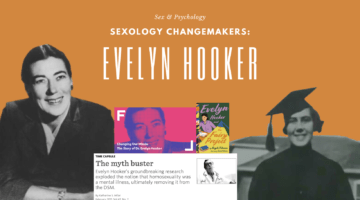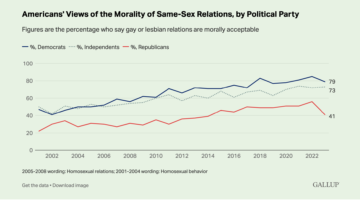Sex Question Friday: Is “Lesbian Bed Death” A Real Thing?
March 20, 2015 by Justin Lehmiller
A reader submitted the following question:
“Is there any truth to the concept of lesbian bed death, or is this just an urban legend?”
Thanks for this great question. “Lesbian bed death” is a common term used to describe the precipitous decline in sexual activity that is thought to occur in long-term lesbian relationships. It stems from a consistent finding in national survey data that female same-sex couples tend to have sex less often than both male-female and male-male couples [1]. This finding is often attributed to the commonly held stereotype that men desire more sex than women and tend to be the primary initiators of it. Thus, some people seem to think that without a man in the relationship, not a lot of sex is going to happen.
So is there any truth behind “lesbian bed death?” It is true that long-term lesbian couples tend to have sex less frequently over time; however, this effect has also been found in almost every other type of long-term relationship, including mixed-sex and male same-sex couples. This is not to say that sex usually disappears entirely (although it certainly may in some cases—sexless relationships do exist); rather, the point is simply that a decline in sexual frequency is hardly unique to lesbians.
Also, while lesbian couples do tend to have sex less often compared to other couples, sexual frequency data doesn’t tell the full story. If you only focus on the number of sex acts without considering the duration of each act, you may come to erroneous conclusions about who spends the most and who spends the least total time on sex. Indeed, it may very well be that lesbians have sex less often, but when they do have sex, they do it for longer than average—and this is exactly what research has found.
A recent study published in the Canadian Journal of Human Sexuality found that while women in same-sex relationships reported having sex significantly less often than persons in both mixed-sex and male same-sex relationships, women in same-sex relationships reported significantly longer durations of sexual activity than all other groups [2].
Consider this: for women in same-sex relationships, the median (50th percentile) time spent on sex was 30-45 minutes; in contrast, the median for everyone else was 15-30 minutes. Also, whereas about 20% of women in same-sex relationships reported spending an hour or more on sex, durations of this length were much less common among other types of couples.
There were also no differences in sexual satisfaction across couple types, suggesting that any differences in sexual frequency were counterbalanced by differences in sexual duration.
In short, it’s time that the concept of “lesbian bed death” is put to bed once and for all. While women in same-sex relationships may have sex less often than other couples, their sexual act tends to be longer and they do not appear to be any less sexually satisfied.
For previous editions of Sex Question Friday, click here. To send in a question for a future edition, click here.
Want to learn more about Sex and Psychology? Click here for previous articles or follow the blog on Facebook (facebook.com/psychologyofsex), Twitter (@JustinLehmiller), or Reddit (reddit.com/r/psychologyofsex) to receive updates.
[1] Blumstein, P., & Schwartz, P. (1983). American couples: Money, work, sex. New York: Morrow.
[2] Blair, K. L., & Pukall, C. F. (2014). Can less be more? Comparing duration vs. frequency of sexual encounters in same-sex and mixed-sex relationships. The Canadian Journal of Human Sexuality, 23(2), 123-136.
Image Credit: Frenk and Danielle Kaufmann/123RF.com
You Might Also Like:

Dr. Justin Lehmiller
Founder & Owner of Sex and PsychologyDr. Justin Lehmiller is a social psychologist and Research Fellow at The Kinsey Institute. He runs the Sex and Psychology blog and podcast and is author of the popular book Tell Me What You Want. Dr. Lehmiller is an award-winning educator, and a prolific researcher who has published more than 50 academic works.
Read full bio >

